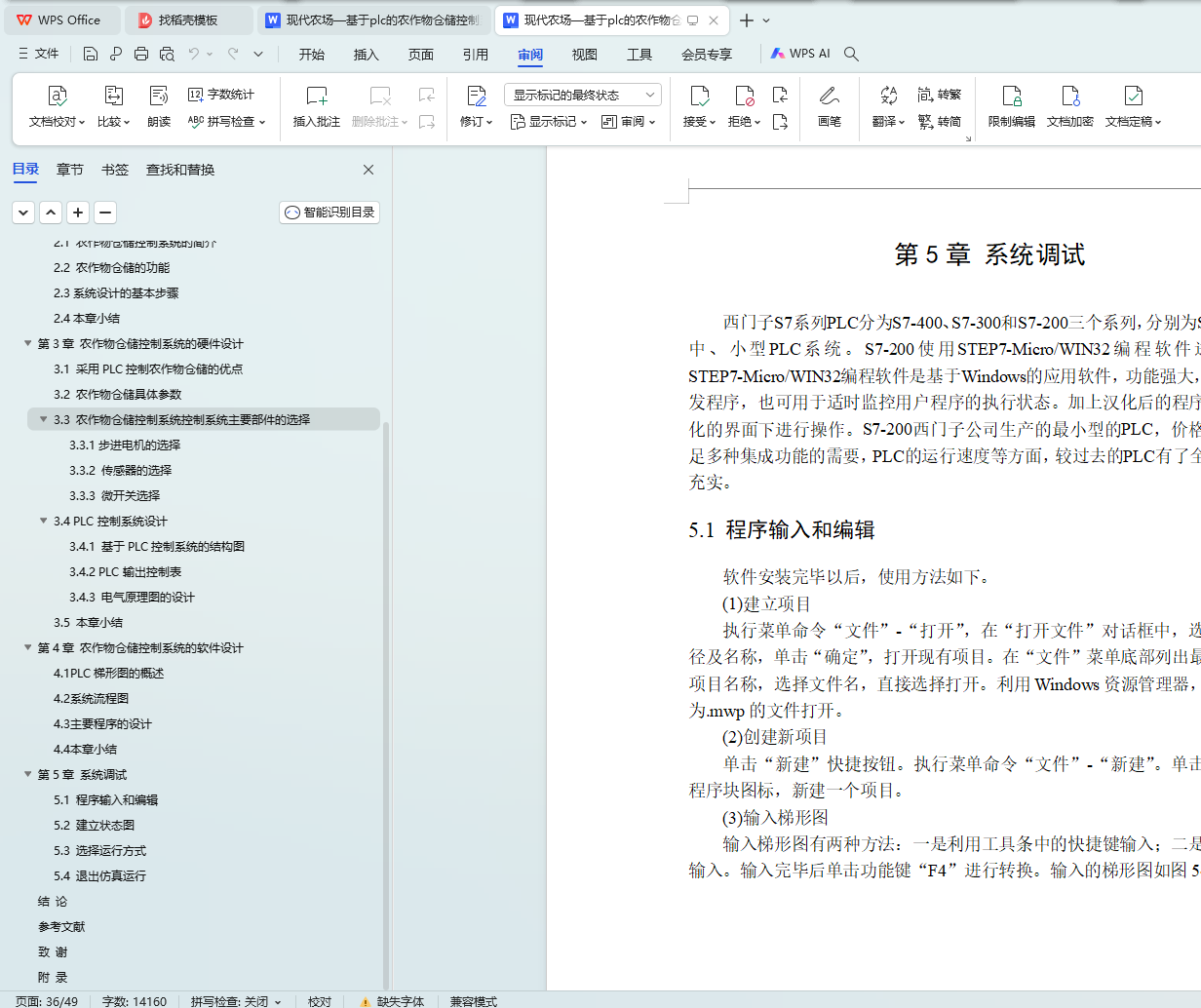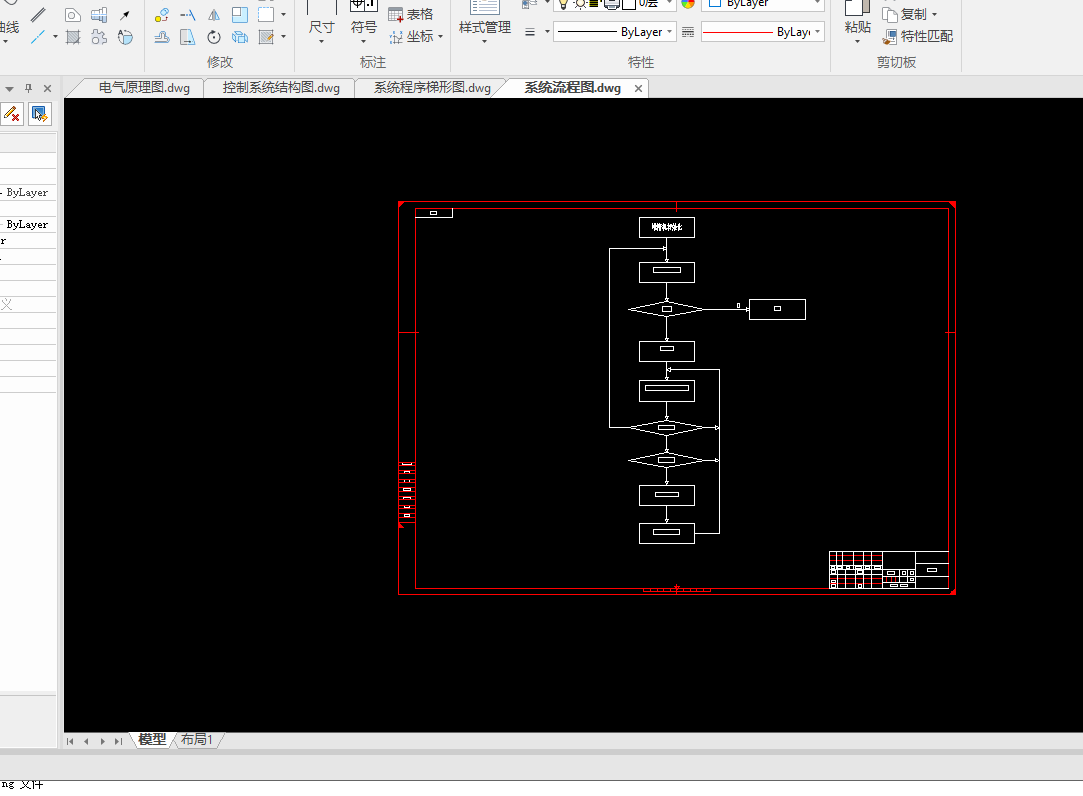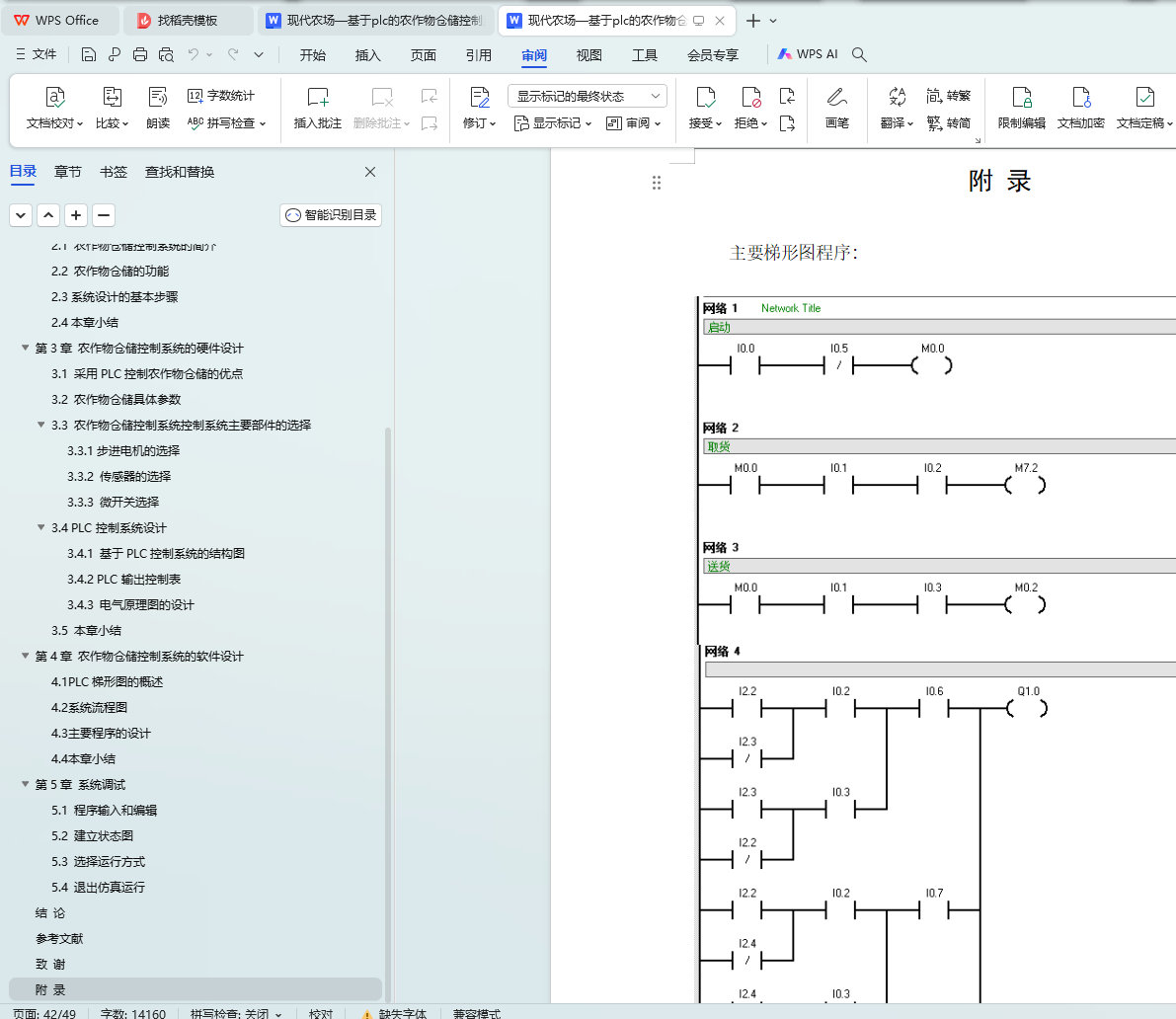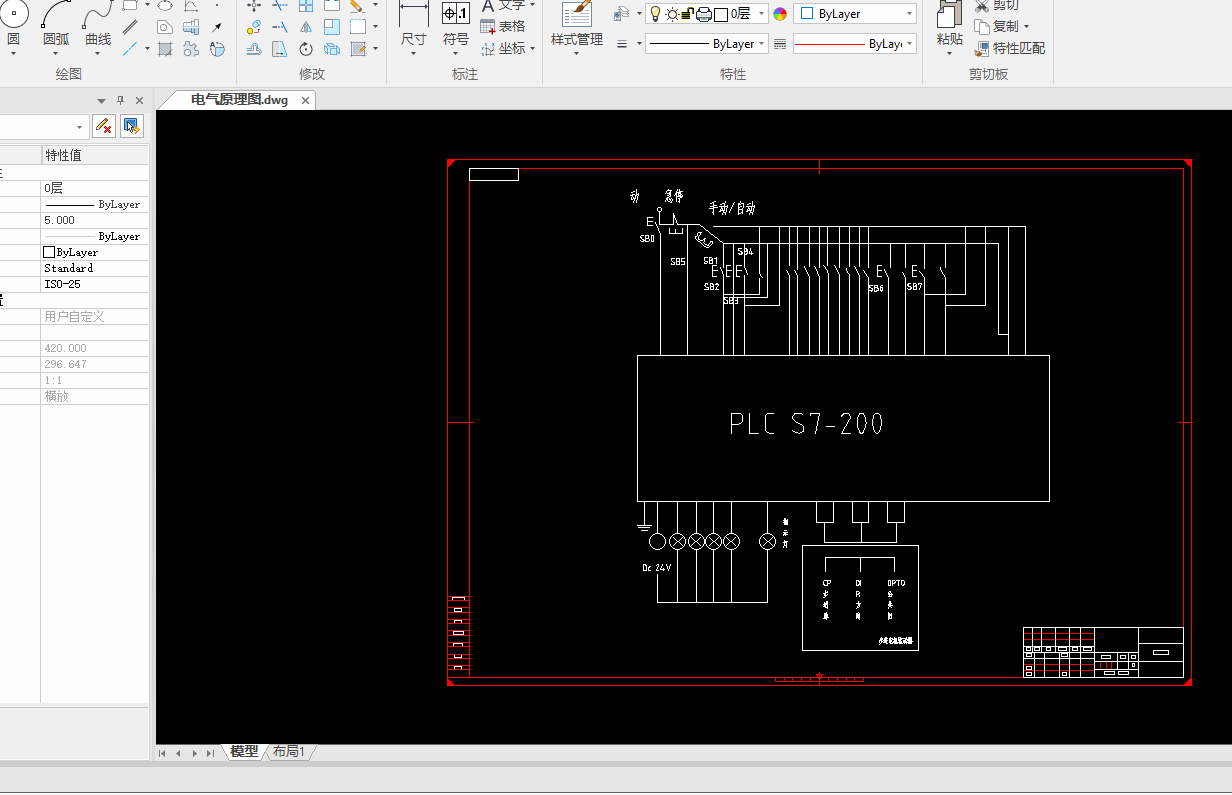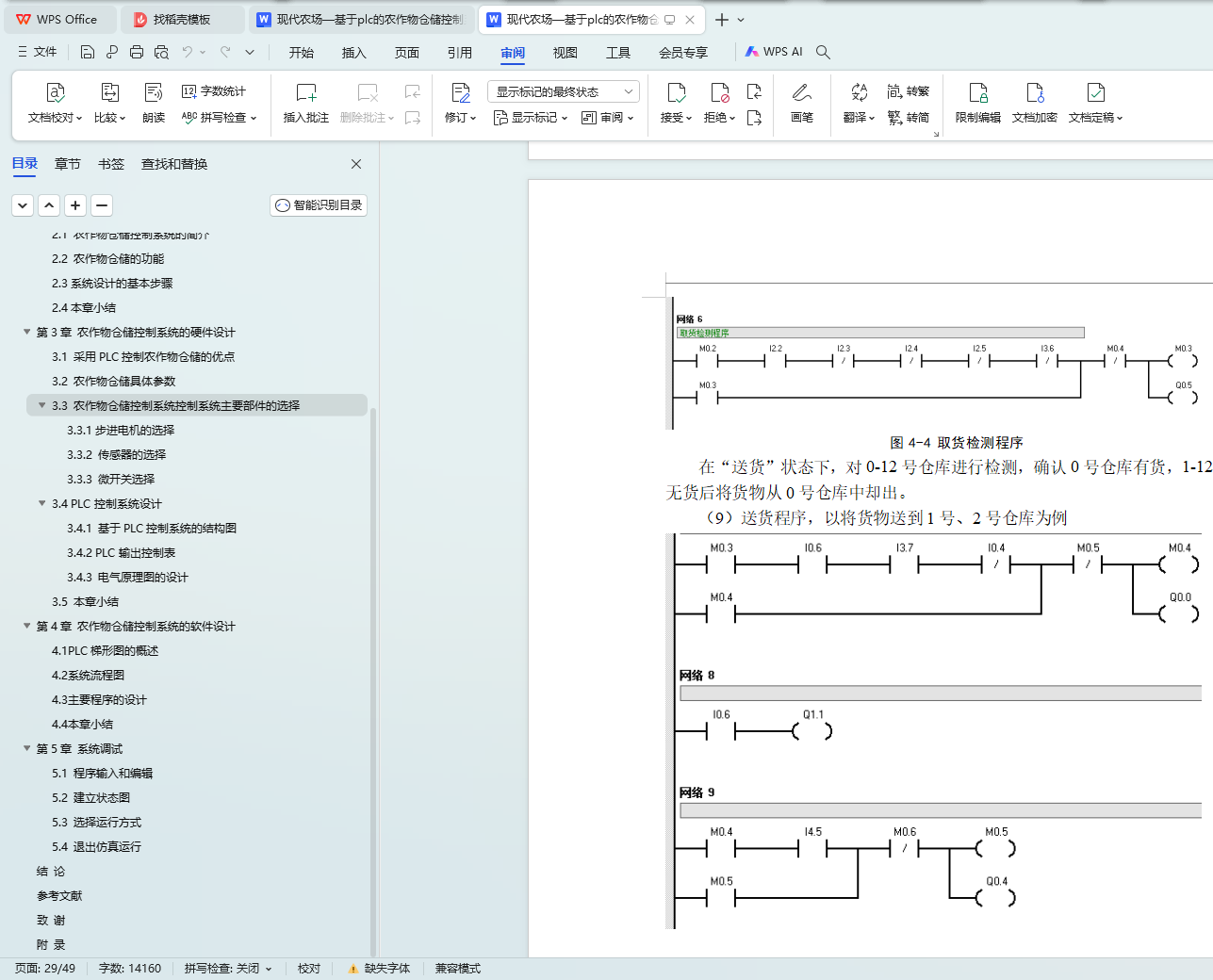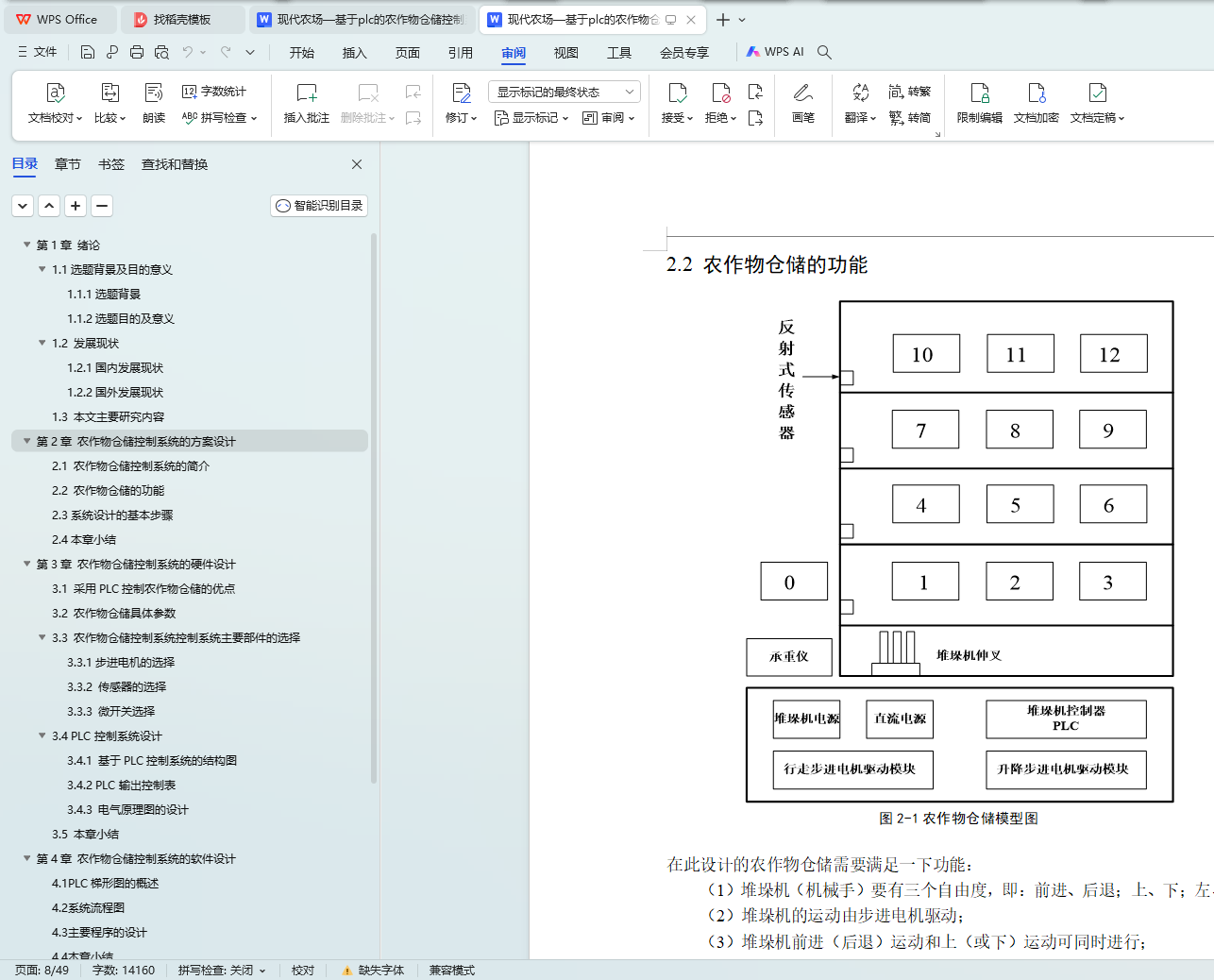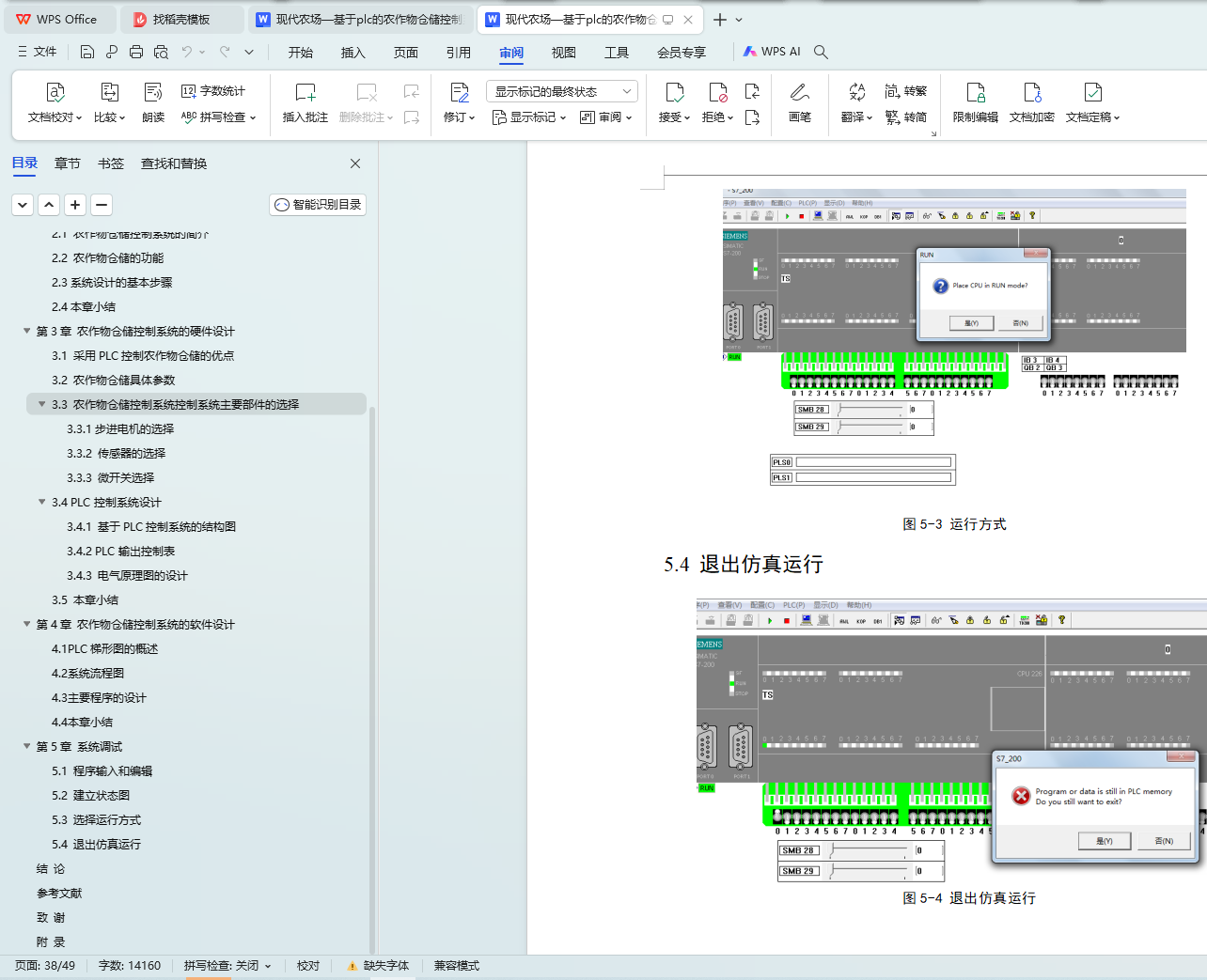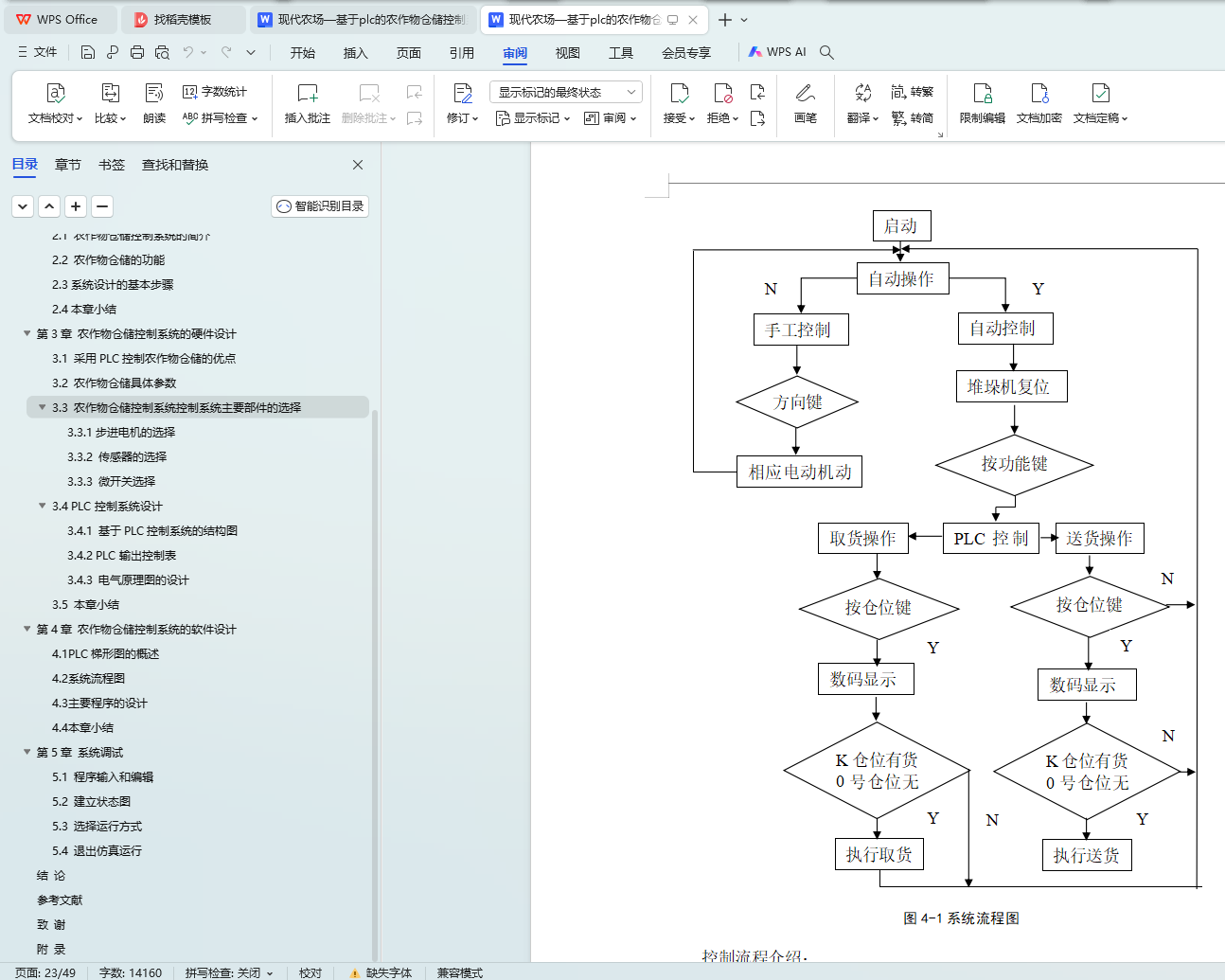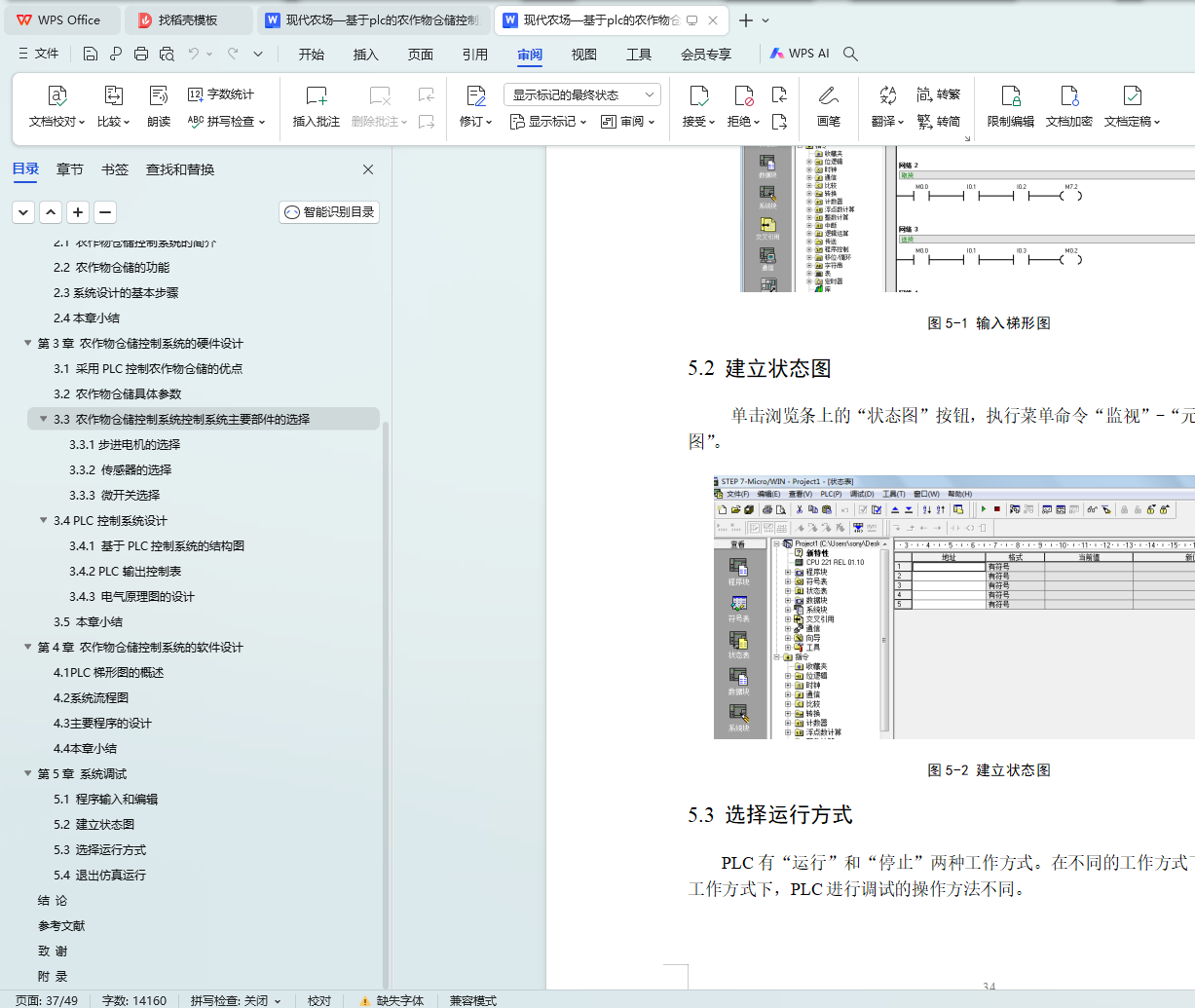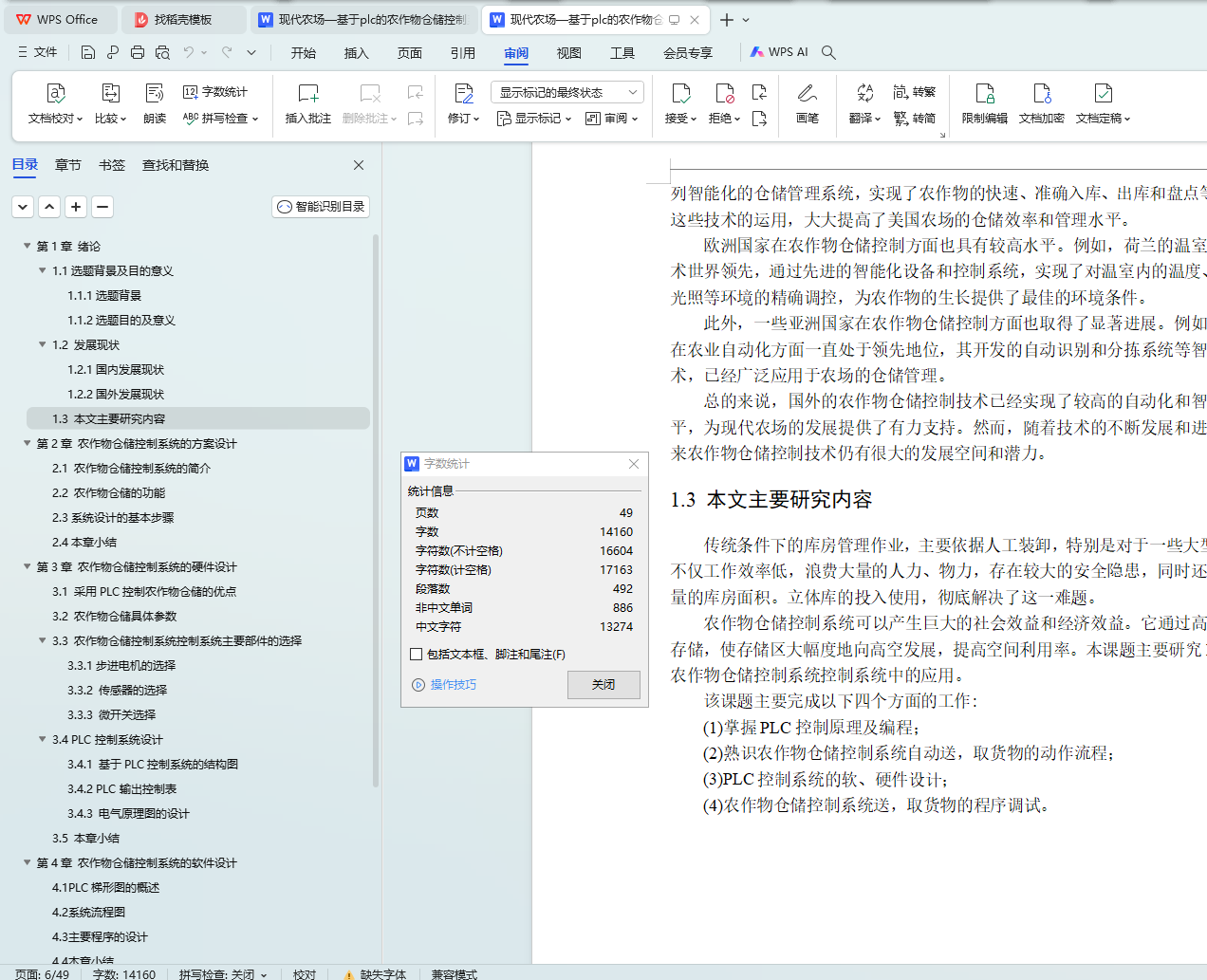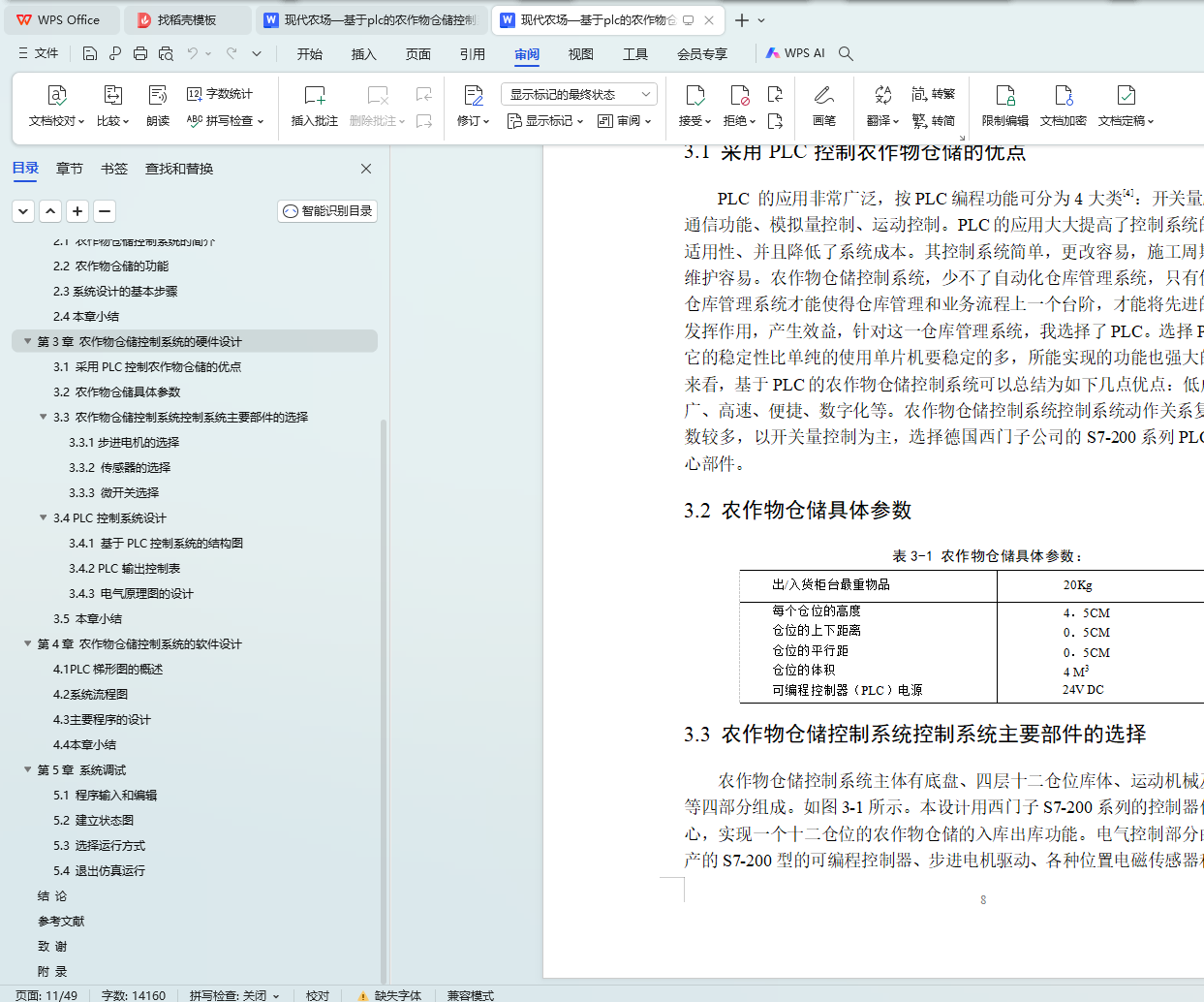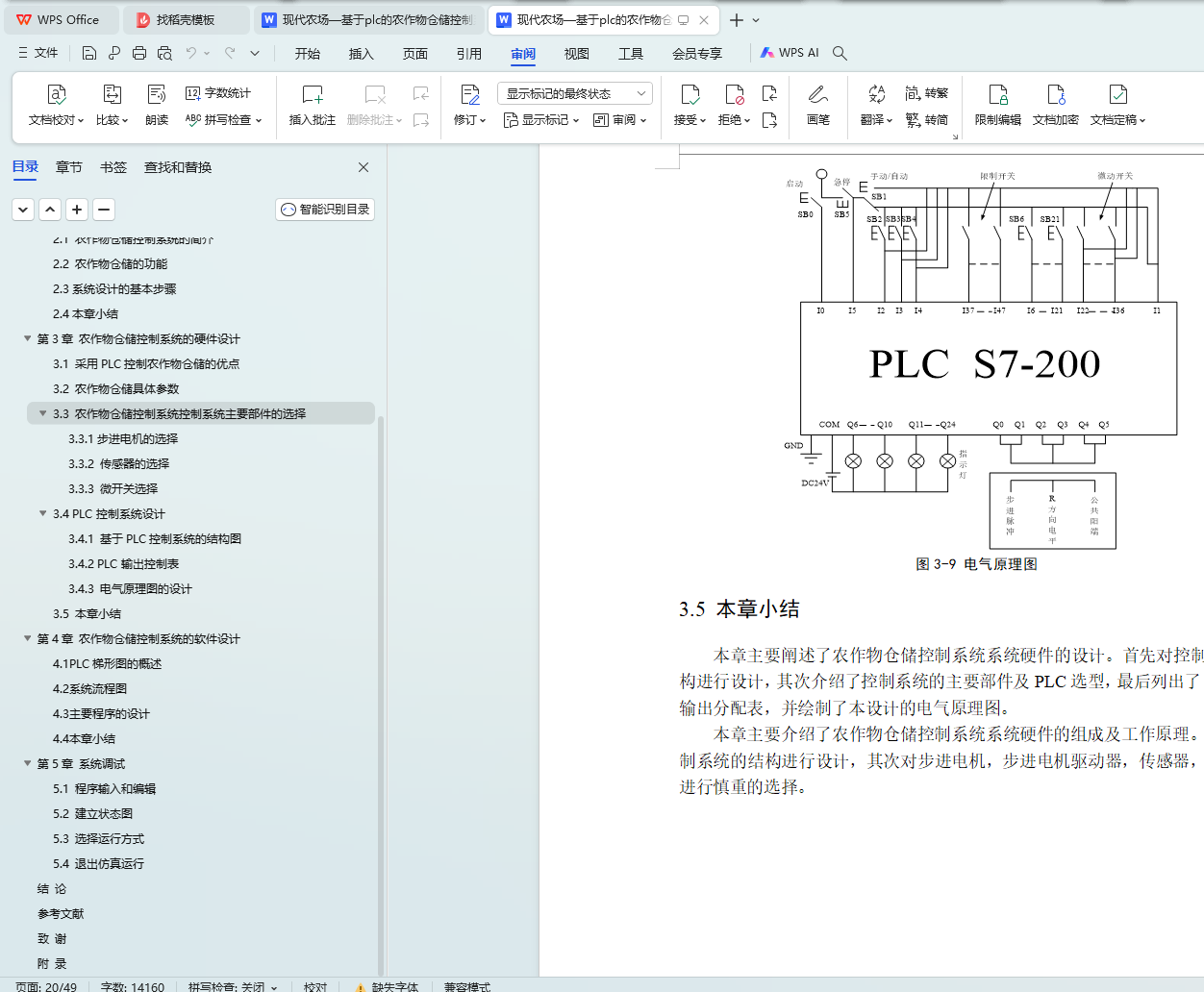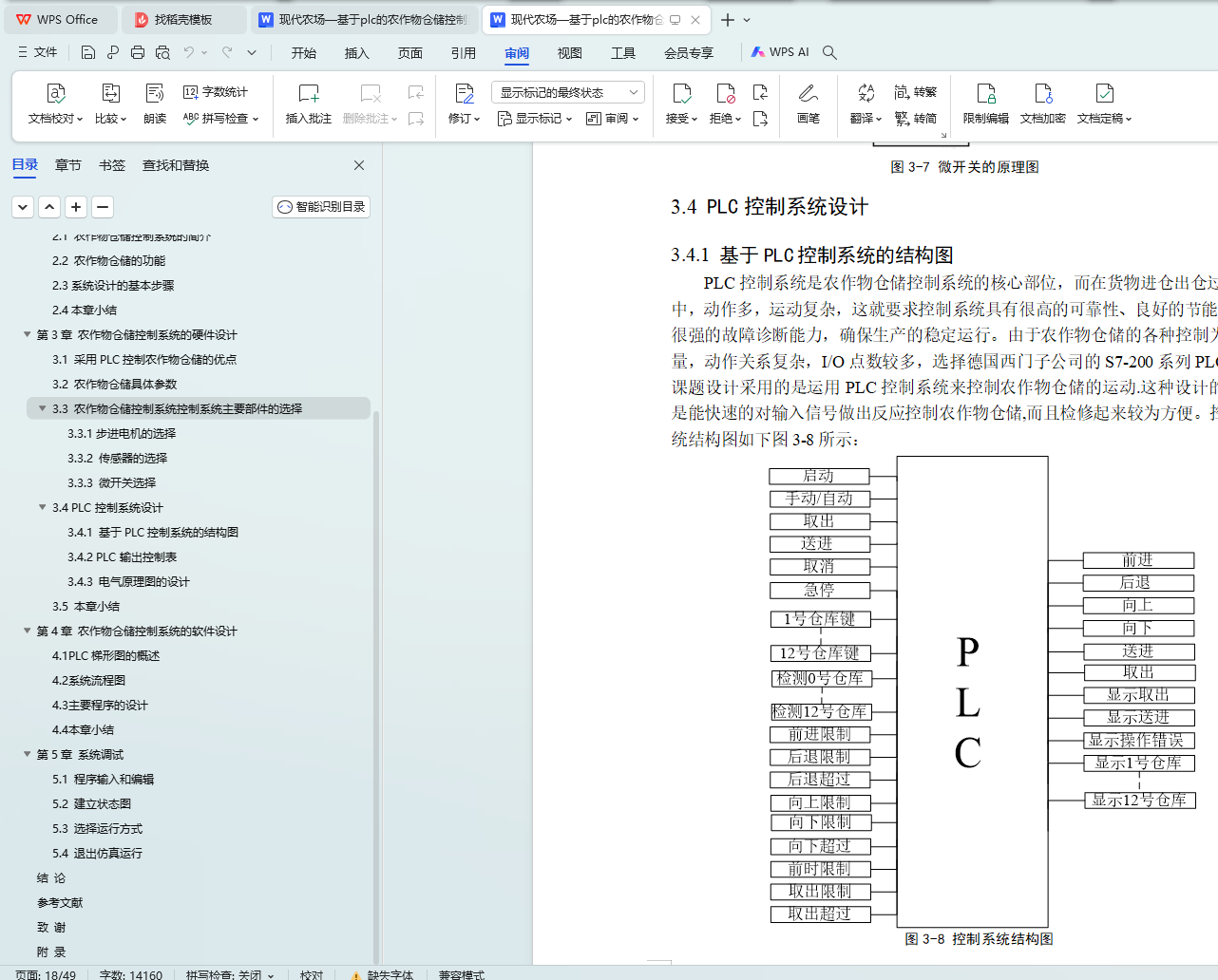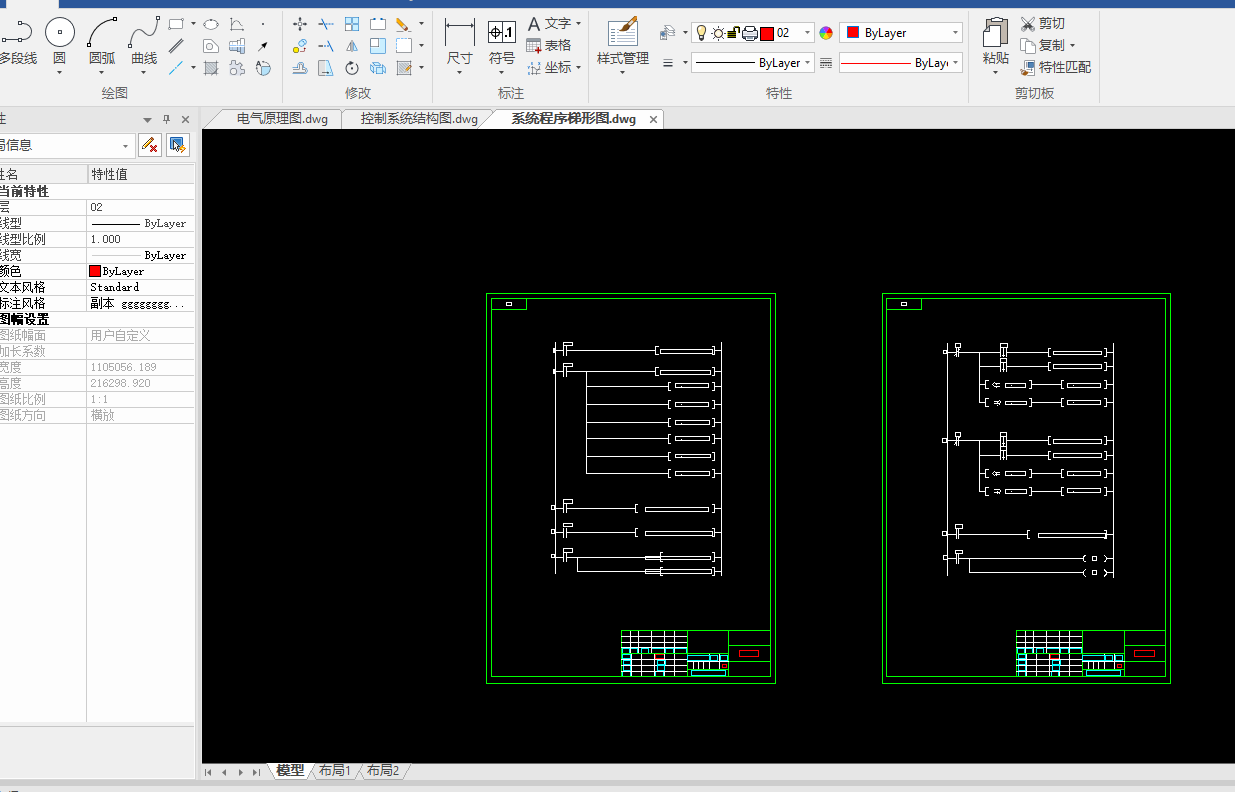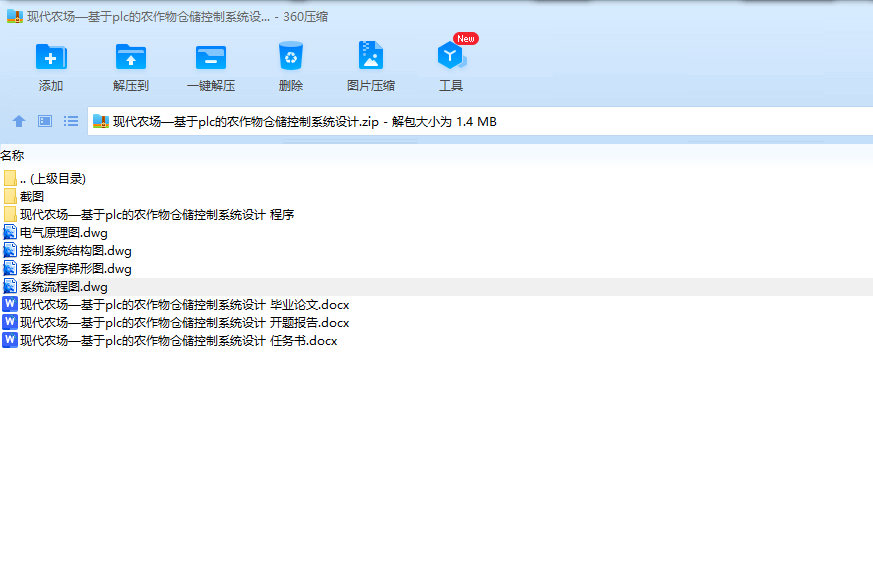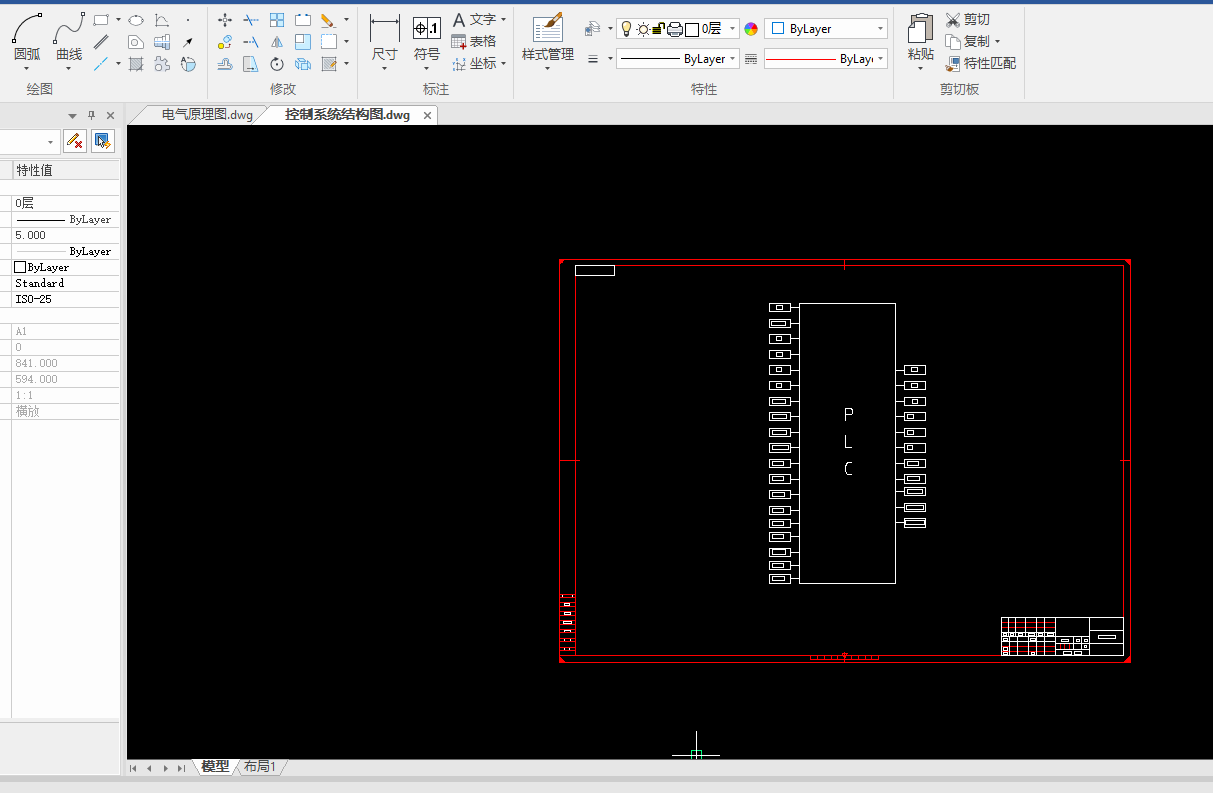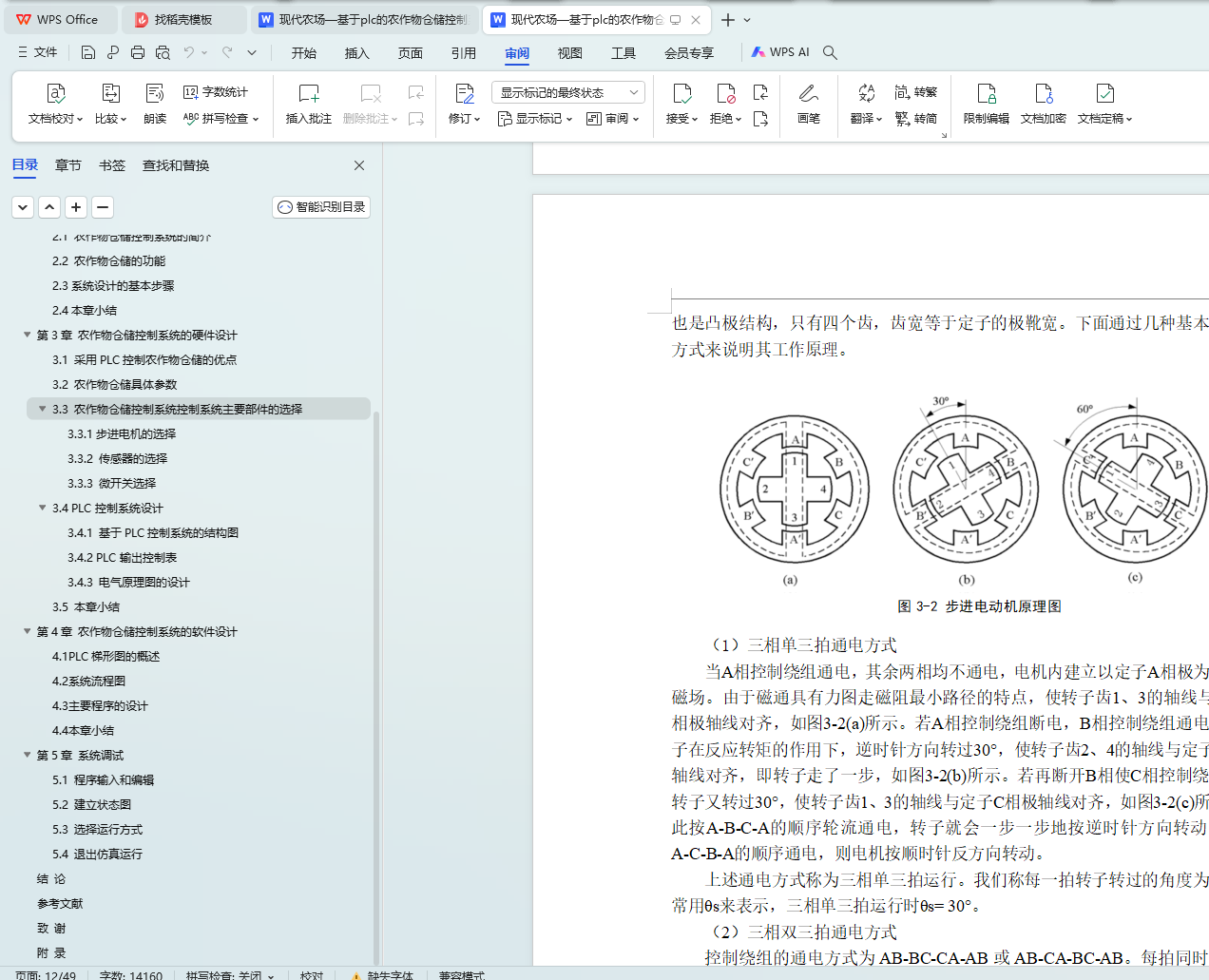摘 要
随着农业技术的发展,现代农场对农作物仓储控制系统的要求越来越高。基于PLC进行农作物仓储控制系统的设计用以提高农作物的存储质量和效率,降低农产品变质、腐烂和损失的概率。
本设计致力于开发一个基于PLC的现代农作物仓储控制系统,以满足现代农场对高效、智能仓储管理的需求。该系统针对1000平方米的仓储空间,可对三种以上农作物进行智能仓储控制。它集成了农作物状态监测、环境监控、智能入库、故障诊断与报警以及人机界面等功能。通过PLC和触摸屏等主要控制设备的选择和程序编写,实现农作物的智能化管理,提高仓储效率,降低管理成本。同时,实时监测装置运行状态,一旦发现异常情况,立即报警并诊断故障原因,确保系统稳定运行。
关键词:PLC;农作物仓储;状态监测;环境监控;智能入库
Abstract
With the development of agricultural technology, modern farms have higher and higher requirements for crop storage control system. The crop storage control system based on PLC is designed to improve the storage quality and efficiency of crops, and to reduce the probability of deterioration, decay and loss of agricultural products.
This design is committed to the development of a modern crop storage control system based on PLC to meet the needs of modern farms for efficient and intelligent storage management. The system is for 1,000 square meters of storage space, which can be intelligent storage control of more than three kinds of crops. It integrates crop status monitoring, environmental monitoring, intelligent warehouse monitoring, fault diagnosis and alarm, and man-machine interface and other functions. Through the selection and programming of major control equipment such as PLC and touch screen, the intelligent management of crops is realized, storage efficiency is improved and management costs are reduced. At the same time, the operation status of the device is monitored in real time. Once the abnormal situation is found, immediately alarm and diagnose the cause of the fault to ensure the stable operation of the system.
Key words: PLC; crop storage; condition monitoring; environment monitoring; intelligent storage
目 录
摘 要
Abstract
第1章 绪论
1.1选题背景及目的意义
1.2 发展现状
1.3 本文主要研究内容
第2章 农作物仓储控制系统的方案设计
2.1 农作物仓储控制系统的简介
2.2 农作物仓储的功能
2.3系统设计的基本步骤
2.4本章小结
第3章 农作物仓储控制系统的硬件设计
3.1 采用PLC控制农作物仓储的优点
3.2 农作物仓储具体参数
3.3 农作物仓储控制系统控制系统主要部件的选择
3.4 PLC控制系统设计
3.5 本章小结
第4章 农作物仓储控制系统的软件设计
4.1 PLC梯形图的概述
4.2 系统流程图
4.3 主要程序的设计
4.4 本章小结
第5章 系统调试
5.1 程序输入和编辑
5.2 建立状态图
5.3 选择运行方式
5.4 退出仿真运行
结 论
参考文献
致 谢
附 录
